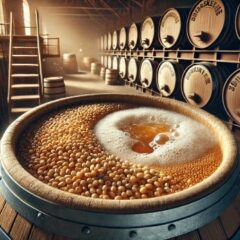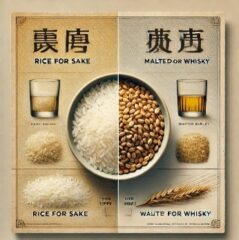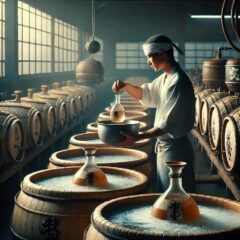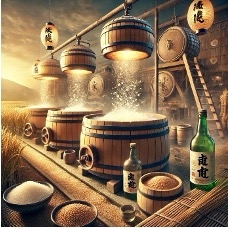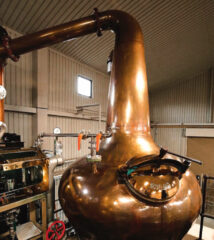Whisky Process – From Nature to Cask, Spirit to Soul
What process japanese whisky produce process
Explore how Japanese spirits are made—from water source to cask aging—showcasing techniques rooted in both art and precision.
Premium Japan offers carefully curated selections that reflect the elegance, tradition, and craftsmanship of Japan. Each item in this category represents a blend of artistry, utility, and cultural spirit — designed to enhance daily life and meaningful rituals.
Discover more in our Japan Whisky & Sake
Additional Explanation – The Artful Process of Japanese Whisky Making
Japanese spirits are not simply distilled — they are composed. Like a piece of classical music or a minimalist brushstroke in sumi-e painting, their creation involves restraint, patience, and harmony. From mountain spring to cask and glass, every step in the Japanese spirit-making process is infused with philosophy and precision, reflecting not only technique but a cultural reverence for craftsmanship (monozukuri) and nature’s rhythm.
It all begins with water — and in Japan, water is sacred. Distilleries are often nestled near pristine mountain springs, where the meltwater is soft, pure, and low in minerals. This delicate water shapes the texture of the final spirit, allowing subtle flavours to flourish. In places like Yamazaki, Hakushu, and Miyagikyo, the air is misted with forest dew and the scent of moss — a terroir not just seen, but tasted. Water is the soul’s first note in the spirit’s composition.
Next comes the grain — typically imported malted barley, though some Japanese distilleries have begun to explore domestic strains. The malted barley is ground and mixed with the sacred spring water, then heated to extract the sugars in a stage called mashing. This sweet liquid, or wort, is then cooled and transferred to fermentation tanks.
Fermentation in Japanese whisky often uses wooden washbacks — a nod to tradition, allowing natural bacteria to influence the complexity of the flavor. Distilleries here are known for experimenting with different yeast strains, temperatures, and fermentation lengths. This quiet fermentation — sometimes lasting over 70 hours — breathes character into the spirit, from gentle florals to orchard fruits, umami richness, or even a whisper of smoke.
After fermentation, the liquid is distilled. Most Japanese distilleries use copper pot stills, which are meticulously cleaned, shaped, and fired to bring out elegance rather than brute strength. Some distilleries, such as Chichibu, employ a variety of still shapes and sizes to create a broader range of base spirits. Japanese spirits often undergo double distillation, separating the heads and tails with sharp sensory judgement to preserve only the heart — the cleanest, most flavoursome cut.
The resulting clear spirit, or new make, is then laid to rest in wooden casks. This is where time takes over. Japanese spirits are aged in a variety of woods: American oak, sherry casks, and sometimes rare mizunara — a Japanese oak prized for its spiced sandalwood and incense-like aromas. Mizunara is notoriously difficult to work with, requiring decades to mature and highly skilled coopers, but its reward is ethereal.
The aging process in Japan is shaped by the island’s unique climate. Hot, humid summers and icy winters accelerate maturation and deepen flavour layers. But aging is not about rushing — it’s about listening. The master blenders, often trained over decades, taste and evaluate each barrel, selecting and blending them with profound intuition. Japanese spirits are rarely single-note. They are often a blend — of spirits, barrels, years, and emotion.
Blending is considered an art form in itself. It is in this final stage that Japanese spirits achieve their distinct identity. Balance, harmony, and restraint take centre stage. A little sweetness, a little smoke, a little silence — all carefully orchestrated to create a spirit that invites reflection.
Japanese spirits are more than a drink. They are a dialogue between man and nature, time and technique. They are shaped by misty mountains, quiet forests, ancient waters, and the human hand.
To explore the traditional and modern techniques that define Japanese whisky, we recommend visiting the Nikka Whisky official production guide, which outlines each step from mashing to maturation with clarity and detail. For a broader cultural and historical overview of Japanese whisky craftsmanship, Whisky Advocate’s Japanese Whisky Guide offers insight into how Japan blends artistry, terroir, and time into every bottle.
Jump to Top
